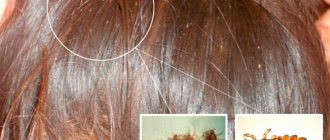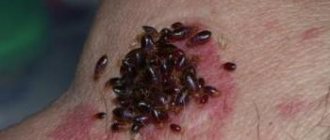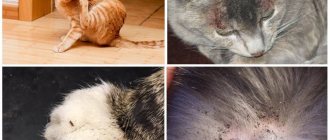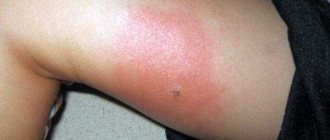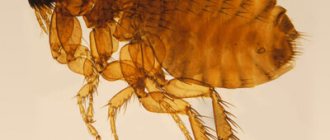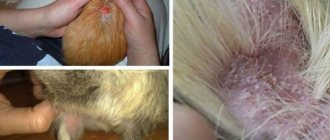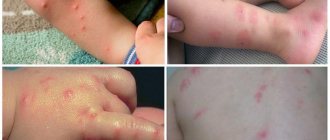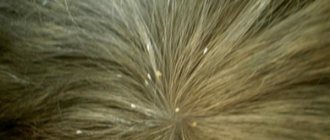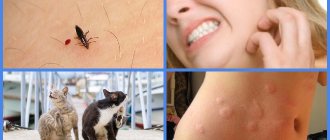Many pet cat owners are familiar with the problem of fleas appearing in their pet's fur. These blood-sucking insects not only cause serious discomfort to the animal, but can also carry dangerous diseases. The more fleas there are, the higher the risk of an allergic reaction, dermatitis or infection. Therefore, you need to learn how to detect these parasites in time and know how to get rid of them.
Fleas are common blood-sucking insects that live in animal fur. These parasites have a flattened body, thanks to which they easily move in the fur. Capable of jumping high - up to 30 cm. They bite through the skin and feed on the pet's blood, usually living on the stomach, near the ears - in those places where the skin is thinner.
How to tell if a cat has fleas
Each flea is small in size - 2-3 mm, and drinks little blood. The danger of infection by these insects is that they multiply quickly. A large number of parasites causes serious discomfort to the cat. They can cause the development of anemia, dermatitis, and allergic reactions. They carry worms and serious infectious diseases. Due to constant itching, the pet becomes irritable, and scratching the skin can cause infection.
Flea infection is especially dangerous for kittens and animals with weak immune systems. When there are a lot of insects, they can even bite a person. Therefore, you need to know what symptoms you can use to understand that your cat has fleas:
- the pet has become restless, irritable, and aggressive;
- his appetite decreased, he began to sleep poorly;
- often itches, licks itself intensively, rubs against the floor and walls;
- irritation or an allergic reaction appears on the skin;
- you can notice red spots, scratches, bleeding wounds;
- The condition of the fur has worsened: it has become dull and falls out.
How to check a cat
To understand that a cat's behavior change is caused by flea infestation and not by other insects or diseases, you need to examine it. Use your hands or a comb to part the fur, examining the skin. When infested with fleas, not only wounds and red spots on the fur will be noticeable, you can detect the insects themselves and traces of their vital activity. These are black dots, light small eggs.
You can place your pet on a white sheet or towel and comb the fur well with a fine comb and slicker brush. Black dots and the insects themselves will be immediately visible on white. To distinguish flea excrement from ordinary dirt, you need to slightly wet it. They will turn brown or red because they contain blood.
Possible negative consequences
As one of the forms of using an insecticide against fleas, an anti-flea accessory can cause the following troubles:
- Allergy to flea collar . This phenomenon is not uncommon when using an antiparasitic accessory. Allergies most often occur when permethrin and tetrachlorvinphos are used as impregnations. The reaction may manifest itself in the form of itchy skin, sneezing, and watery eyes. In acute cases, convulsions, loss of coordination of movement, depression, and loss of consciousness are possible. Allergy symptoms usually appear 1 to 2 hours after use.
- Poisoning . Symptoms of poisoning by insecticides contained in the collar are similar to those of an allergic reaction. But in case of intoxication, the first signs appear 5 - 6 hours after using an accessory soaked in chemicals, and in case of allergies - in the first hour.
It is impossible to answer unequivocally the question of whether a flea collar is harmful. Allergic manifestations, poisoning and chronic intoxication certainly have a negative impact on the pet’s health. It is also recommended to periodically check the condition of the pet’s skin during the entire period of use of the protective device.
How can a domestic cat become infected with fleas?
Some owners believe that if a pet does not go outside, then it cannot have fleas. But parasites often appear in domestic cats. These insects reproduce quickly, live at temperatures of 20-30 ° C, but during the cold season they settle in the basements of houses. The risk of infection is especially high if the cat lives in a rural area. But she can also become infected in the city. How do insects get on a cat's fur?
- from other pets, usually from dogs that walk outside;
- from mice, rats, even pigeons that fly to the balcony where the cat likes to sit;
- enter from the entrance when opening the door to the apartment, through ventilation or cracks from neighbors;
- brought on the shoes or clothes of people from the street.
Precautionary measures
Due to the fact that the collar contains toxic substances, it is necessary to take precautions when handling it:
- if the collar is ineffective and the pet shows signs of allergies, then an urgent need to change the manufacturer;
- you need to purchase those products that, according to reviews, are recommended as effective;
- use simultaneously with other drugs is prohibited;
- correct placement of the collar on the animal to prevent harmful substances from entering the food tract.
Review of flea products
There are many flea treatments sold in pet stores and veterinary pharmacies. They differ in method of application, cost, and the age and size of the pet must also be taken into account. To remove parasites the following are used:
- shampoos;
- sprays;
- drops on the withers;
- collars;
- pills.
Shampoos
The easiest and most popular way to rid a cat of parasites is to bathe him with a special shampoo. They contain essential oils and insecticides. Popular shampoos are Bars, Celandine, Lugovoy, BIO-GROOM, Doctor ZOO, Fitoelita. These products are suitable even for kittens and have many advantages:
- safe for pregnant cats and pets with allergies;
- have no contraindications, are easily tolerated;
- easy to use;
- are inexpensive.
But shampoos are effective only at the initial stage of infection, when there are still few insects. After bathing, the animal's fur acquires an aroma that insects do not like. It lasts 5-10 days. Therefore, you need to take measures to avoid re-infection: treat the apartment and the pet’s place.
Sprays
Sprays are the most effective remedy. Use only in case of severe infection after consultation with a veterinarian. They quickly destroy not only insects, but eggs and larvae. You can use Dana Ultra, Fiprist, Celandine, Frontline, BlochNet, Beaphar and others.
Sprays are toxic, suitable only for healthy adult cats, and can cause an allergic reaction. They should not be used frequently. When using, you must follow the instructions exactly:
- spray the spray from a distance of 25 cm;
- It is advisable to carry out the procedure outdoors or with an open window, wear protective gloves;
- wet all the animal’s fur, avoiding contact with the face and ears;
- For 15-30 minutes, make sure that the cat does not lick the fur or put a special collar on it;
- bathe your pet.
You can also find sprays for killing insects on furniture and objects on sale. They are less toxic, but cannot be used on animals. They are used to treat bedding, carpets, furniture, baseboards
Drops
Drops are the most popular way to get rid of parasites among pet cat owners. It is simple, effective and quite safe. They act quickly and protect against re-infection for 2-4 weeks. The drops are easy to apply; you don’t have to treat the apartment additionally. They are produced in disposable packaging in the form of a pipette. Popular means Bars, Frontline, Stronghold, Advantis, Advocate.
The drops contain insecticides and other substances that have a detrimental effect on insects, but are safe for the animal. In rare cases, they may cause an allergic reaction. Drops are applied to the skin in the withers area, from where they spread throughout the body. They accumulate in the sebaceous glands and are gradually released, repelling or destroying insects.
The drops should be used strictly according to the instructions, taking into account the age and weight of the pet:
- 3-5 days before the procedure, bathe the cat;
- spread the fur at the withers and drip the required amount of product onto the skin, preferably in several places, but not below the shoulder blades;
- Do not pet the cat for 24 hours and keep it away from children, as the substances released are toxic;
- Do not bathe your pet for 3-5 days, try not to let him get wet.
Collar
This is the easiest way to rid your cat of fleas. You just need to put a collar on him. It is impregnated with active substances, with a strong odor that parasites cannot tolerate. Popular collars are Bars, Celandine, Bio Band, Beaphar, Doctor ZOO, Bio Vax.
The effect of the collar lasts for several months. It protects against infection rather than kills insects, so it is more suitable for prevention. It is convenient to use if the cat often walks outside. It is better to use the collar after the fleas have been destroyed in another way. But you cannot use several products at the same time.
Sometimes active substances cause allergic reactions, in which case the collar must be removed and the pet bathed. This product should not be used if there are wounds or scratches on the cat’s neck. It is also necessary to take into account that the collar is worn for a long time, the fur under it cakes.
Tablets and injections
If external remedies are not suitable for the cat, for example, with dermatitis or serious skin damage, tablets are used. They contain insecticides that penetrate the animal's bloodstream. After being bitten, the insect dies. They can only be used as prescribed by a veterinarian. Comfortis or Lufenuron tablets are usually prescribed. They can be given to your pet along with food.
If the cat is in serious condition caused by parasites, an injection may be given at a veterinary clinic. This product is only suitable for healthy adult animals. The drugs Ivermectin, Eprimek and others are used.
Folk remedies
For mild infections, you can use folk remedies. They are also suitable for prevention. There are herbs with a strong odor and insecticidal properties. These are wormwood, tansy, chamomile, geranium. The plants need to be brewed and the wool moistened. Then it is advisable to wrap the cat in a towel and hold it for 15 minutes. It is better to unwrap it over the bathtub, as fleas will jump out. The same decoction can be used to treat the cat's area, carpets, and furniture.
Another effective non-native remedy is bathing with salt. A solution of 100 g per 1 liter of water is used, you need to immerse the cat in it up to the neck and hold for 10 minutes. Then wash with shampoo. After the procedure, comb out dead insects from the fur.
Wearing rules
Many collars emit a specific unpleasant odor, so cats do not like wearing them around their necks. Basic tips for the correct use of collars:
- open the package;
- put the collar on in such a position that your fingers can be easily held between it and the animal’s neck;
- secure it with a special fastener;
- trim the excess length of the tape.
The instructions on the package or from the manufacturer indicate a maximum shelf life ranging from a few weeks to six months. It is best to replace it at least once every 2-3 months.
Important! The period of protection against fleas is 4 - 6 months, against ticks is much shorter - no more than 2 months.
How to remove fleas from a cat
If you find fleas on your cat, you need to start fighting them as soon as possible. You can usually do this yourself. You should consult a veterinarian only in serious cases, in the presence of allergies, and also if a kitten under 3 months, a pregnant cat, or an elderly animal is infected.
The fight against parasites consists of several stages:
- Choose a drug depending on the pet’s age and weight, health condition and degree of infection. Be sure to carefully study the instructions and follow them.
- If there are only a few fleas, bathe the cat with a special shampoo. For severe infestation, use spray or drops. Be sure to follow the dosage recommended in the instructions.
- Disinfect the room, cat area, furniture.
- Repair damage caused by insects to your pet. Antihistamines and local antiseptics may be required for wound healing.
- Take preventative measures to avoid re-infection.
Features of treatment of kittens and pregnant cats
Kittens have weak immunity; they more often develop negative reactions to infection with parasites, anemia, and dermatitis. If you suspect the presence of fleas, it is advisable to contact a veterinarian who will help you choose the appropriate remedy. Shampoos are usually recommended. Combing the fur with a fine comb is also effective.
Pregnant and lactating cats should not use toxic products that can harm their offspring. They are also advised to use shampoo along with brushing their coat.
How to treat an apartment
The insects themselves, their eggs and larvae can be found on carpets, furniture, and under baseboards. There are a lot of them in the place of the cat, on toys. Therefore, after getting rid of parasites on the animal, it is necessary to treat the apartment.
It is necessary to do a wet cleaning, wash all textile interior items, and replace the bedding in the pet’s place. Furniture, carpets, mattresses need to be vacuumed and treated with steam.
In case of a serious infestation, when there are a lot of fleas, you will have to use insecticides. The most convenient are sprays that are sold in veterinary pharmacies and pet stores. During treatment, it is advisable to remove children and animals from the room for 2-3 hours, then ventilate it well.
General instructions for use
The best collars for kittens and cats are selected by a veterinarian, taking into account the individual characteristics of the pet. The doctor will explain in detail why this type of product is needed and tell you how to use it correctly. But there are also general rules of operation, following which you will be able to avoid complications:
After putting the product on your pet, you should check that it does not put pressure on his neck.
- Before putting a flea collar on your cat, you should read the attached instructions in detail. You need to buy a product intended only for a specific type of animal; do not use products for cats intended for dogs.
- Remove the rubber band from the sealed package and unwrap it.
- Secure it around the pet's neck so that the animal does not experience inconvenience or discomfort. The optimal gap between the neck and the tape is 1-1.5 cm.
- The excess length is cut off, but it is worth leaving a small margin in case the collar becomes loose.
- At the end, you should wash your hands well with warm water and soap.
Prevention measures
To prevent a cat from becoming infected with fleas, preventive measures are needed:
- regularly carry out wet cleaning, thoroughly vacuum furniture and carpets;
- treat animal bedding and toys with disinfectants;
- limit the interaction of cats with street animals;
- periodically bathe the cat with a special shampoo;
- You can place herbs near the pet’s place: wormwood, sage, chamomile;
- use a collar or drops for preventive purposes in the summer, when the pet is taken to the countryside or into nature.
Fleas on cats are a common and unpleasant occurrence. But don’t panic, they are easy to get rid of with the help of special means. If you use them according to the instructions and follow the advice of the veterinarian, your pet will be healthy.
